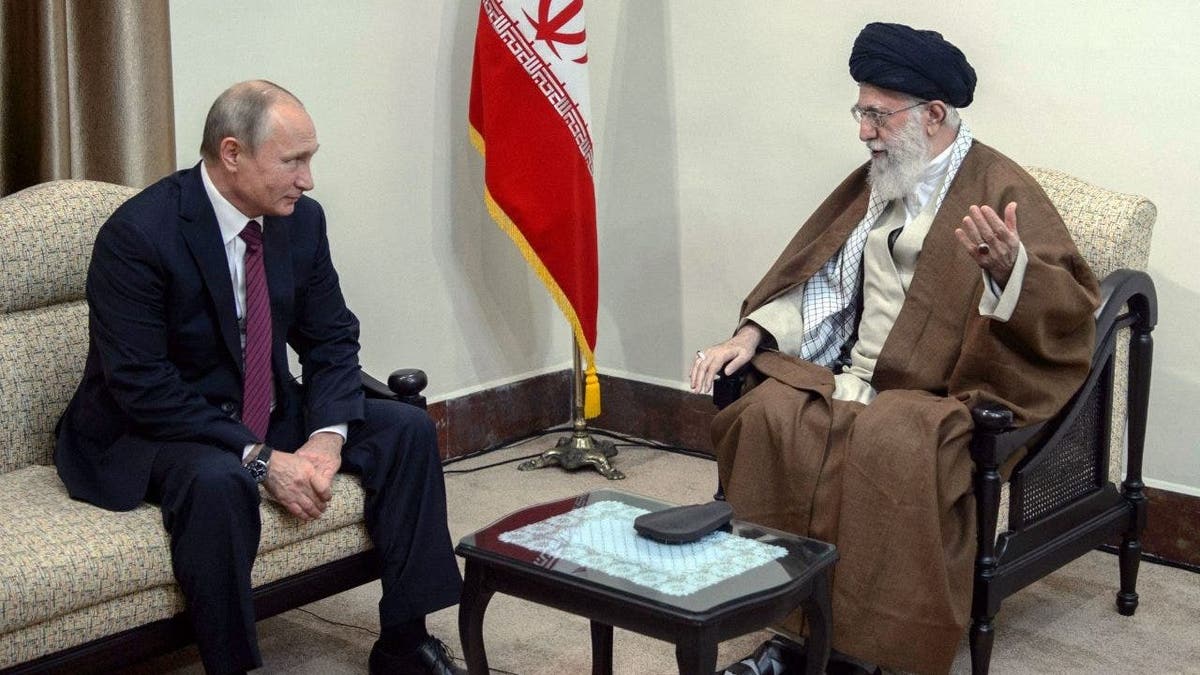America is becoming more like Soviet Russia: Rebekah Koffler
'Putin's Playbook' author Rebekah Koffler discusses why some U.S. citizens are seeking the American Dream in Russia on 'The Bottom Line.'
During the next year and beyond, the United States will likely face a range of "most direct, serious threats," according to the 2024 Annual Threat Assessment of the U.S. Intelligence Community (IC). The report was released to the public, in an unclassified version, on March 11 and presented to senior congressional leaders in a series of classified briefings.
When serving in the Defense Intelligence Agency, I participated in the drafting and coordination of this type of highly classified report, and briefed its conclusions to senior Pentagon officials, congressional staffers, combatant commanders and war planners, as well as White House national security staff. Here’s my analytic rendition of the 41-page document, enhanced by my own intelligence expertise and direct experience with the process that involves 18 IC agencies. I’ve selected the threats that, in my professional judgment, present the gravest danger to the U.S. homeland.
China, Russia, Iran and North Korea

China's leader Xi Jinping, Russian President Vladimir Putin, Iran's Ayatollah Ali Khamenei and Kim Jong Un of North Korea (Getty Images)
China, Russia, Iran and North Korea remain America’s traditional long-term adversaries. While none of these countries has any intentions to launch an unprovoked kinetic attack against the homeland, let alone stage an invasion using military force, all of them have developed doctrines and capabilities to wage asymmetric warfare inside the U.S. This type of non-kinetic warfare involves cyberstrikes, counterspace weapons, covert operatives, biological and chemical agents, and capabilities that cause anomalous health conditions, such as the Havana Syndrome, which can cause brain injuries.
WHAT TO EXPECT FROM PUTIN AS RUSSIAN STRONGMAN BEGINS NEW SIX-YEAR TERM
Russia and China are generally more advanced across the full spectrum of these capabilities than Iran and North Korea. Asymmetric tactics enable these foes to do us harm gradually, below the threshold of a direct response by our military.
Activities involving some of these capabilities are employed by our adversaries today, during peacetime. They do this as part of the process that the U.S. military calls "intelligence preparation of the battlefield." It includes activities such as mapping out access to our computer systems and networks, infiltrating operatives into the country, in order to conduct sabotage during wartime, stealing our technological secrets, identifying military, government and commercial targets, and spying on and compromising government officials.
These adversaries’ common goal, according to the 2024 intelligence report, is to destabilize our society, weaken our economy and influence government policies to align them with their respective agendas.

President Biden meets with Chinese President Xi Jinping on the sidelines of the G-20 summit in Bali, Indonesia, Nov. 14, 2022. (Reuters/Kevin Lamarque/File)
More aggressive actions, involving destructive effects on targets or personnel, are reserved for wartime. Thresholds for authorizing these actions by the leaders of our adversaries vary. They also depend on the current state of relations between Washington and each state actor, which have worsened significantly during the Biden administration.
The deeper cooperation among the four adversaries during the Biden presidency – including the more intensifying strategic partnership between Russia and China, and the military alliance between Russia and North Korea – have raised the level of risk of the sharing of weapons systems and know-how in military and dual-use technologies, including space and counterspace, cyber, and weapons of mass destruction.
1. Cyber
Cyber is a unique non-kinetic, low-cost weapon that each of the four adversaries is highly proficient at. Here’s what the report notes about our adversaries’ cyber capabilities. "Russia maintains its ability to target critical infrastructure, including underwater cables and industrial control systems, in the United States."
WHO IS RUSSIA'S NEW DEFENSE MINISTER AND WHAT'S BEHIND PUTIN’S WARTIME CABINET RESHUFFLE?
China remains the most active and persistent cyber threat to the U.S. government, the private sector and critical infrastructure networks. The report warns about the "increase of China’s aggressive cyber operations against the United States and the suppression of the free flow of information in cyberspace."
North Korea presents a "sophisticated and agile espionage, cybercrime, and attack threat," with Pyongyang’s cyber forces having "full" capability to attack "a wider target set in the United States and South Korea."
"Iran’s growing expertise and willingness to conduct aggressive cyber operations make it a major threat to the security of U.S." The report forecasts that "Iran may attempt to conduct influence operations aimed at U.S. interests" in the run-up to 2024 election.
Our adversaries are increasingly willing to use cyber as a way of inflicting physical harm on Americans. On May 20, the Environmental Protection Agency (EPA) issued an enforcement alert urging community water systems to take "immediate steps" to protect the nation's drinking water by reducing cybersecurity vulnerabilities. EPA inspections revealed that 70% of water facilities across the country violated basic standards, such as the requirement to change default passwords or to cut off system access to former employees.

President Vladimir Putin speaks during celebrations marking the incorporation of regions of Ukraine into Russia in Red Square in Moscow, Sept. 30, 2022. (Anton Novoderezhkin, Sputnik, Kremlin Pool Photo via AP)
EPA identified China, Russia and Iran as the countries that are "actively seeking the capability to disable U.S. critical infrastructure, including water and wastewater." Late last year, an Iranian-linked group "Cyber Av3ngers," in the wake of the Israel-Hamas war, targeted a water provider in a small Pennsylvania town, using an Israeli-made device operated by the utility.
2. Chemical and Biological Threats
The report also warns about the rising threat of chemical and biological weapons in the "near future," including in situations "other than state-on-state military operations." It forecast the emergence of "novel biological threats" due to "rapid advances in dual-use technology, including bioinformatics, synthetic biology, nanotechnology, and genomic editing."
Russia, China, Iran and North Korea are named as countries that "probably maintain the capability to produce and use pathogens and toxins." China and Russia are "proven adept at reducing trust and confidence in countermeasures and U.S. biotechnology and research" by using disinformation tactics.
CLICK HERE TO GET THE OPINION NEWSLETTER

Chinese soldiers arrive at the Grodekovo railway station to participate in war games, in Grodekovo, Russia, on Aug. 29, 2022. (Russian Defense Ministry Press Service)
The report also noted that "countries remain vulnerable to the introduction of a new or reemerging pathogen that could cause another devastating pandemic."
3. Threat of a Direct Kinetic Conflict
Neither Russia nor China – whose forces the Pentagon considers as "near peer competitors" to the U.S. military – seek a kinetic conflict with the United States, which holds conventional superiority over both. But because of their long-standing strategic ambitions to secure control of their respective spheres of interest, both almost certainly have war plans on the books to engage in a direct kinetic conflict with the United States, in Eurasia.
These plans are underpinned by war-fighting doctrines and military capabilities that Moscow and Beijing have been developing for decades, having concluded that Washington’s policies in Eurasia are in direct conflict with their respective agendas in the region and sooner or later their militaries will have to face off with U.S. forces. Both Moscow and Beijing are likely flowing operatives into the United States through the southern border, as part of their long-term programs to subvert their primary perceived enemy and to conduct sabotage inside the U.S. during wartime.
While Moscow and Beijing’s primary goal is to deter the U.S. from getting involved in a conflict on their respective borders, both adversaries would be highly likely to risk a kinetic war with the United States rather than abandon their strategic ambitions in Eurasia.
Vladimir Putin and Xi Jinping would likely activate these war plans if a U.S. president authorizes military force to disrupt Beijing’s and Moscow’s operations against Taiwan or Ukraine and other former Soviet republics (in Russia’s case), respectively. They probably would also consider doing this preemptively, in the run-up to a likely U.S. campaign in the region, to gain strategic initiative by striking first.
Russia views Ukraine and other former Soviet nations, minus the Baltics that are NATO members, as part of its strategic security perimeter and off limits to U.S./Western influence. China views Taiwan in the same way. It’s their version of the U.S. Monroe Doctrine.
CLICK HERE TO GET THE FOX NEWS APP

Russian President Vladimir Putin meets with Iran's supreme leader, Ayatollah Ali Khamenei, in Tehran. (Dmitry Azarov/Sputnik/AFP via Getty Images)
Our spy agencies assess that "China’s serious demographic and economic challenges may make it an even more aggressive and unpredictable global actor." What they aren’t mentioning is that China, as well as Russia, are monitoring very closely our domestic situation, especially the deterioration of economic conditions under the Biden presidency – inflation and skyrocketing national debt – and the potential for social unrest, sparked by the months-long protests associated with the Hamas-Israel conflict on college campuses.
These are the factors that play an even bigger role in Xi and Putin’s decision calculus on whether to engage in a kinetic confrontation with Washington. The strongest ties ever between the two will likely embolden them to assume a higher risk than their normal baseline.





















